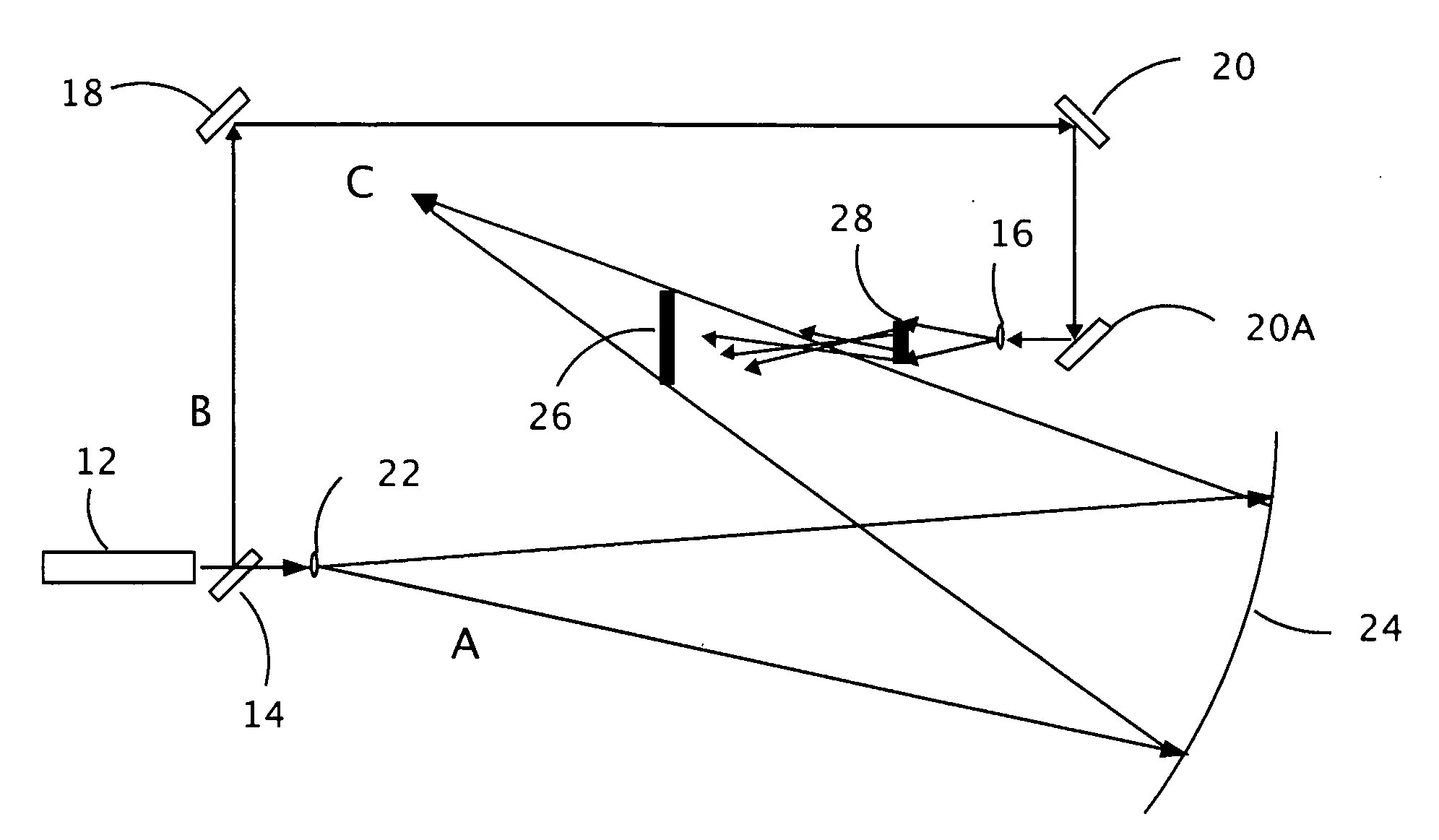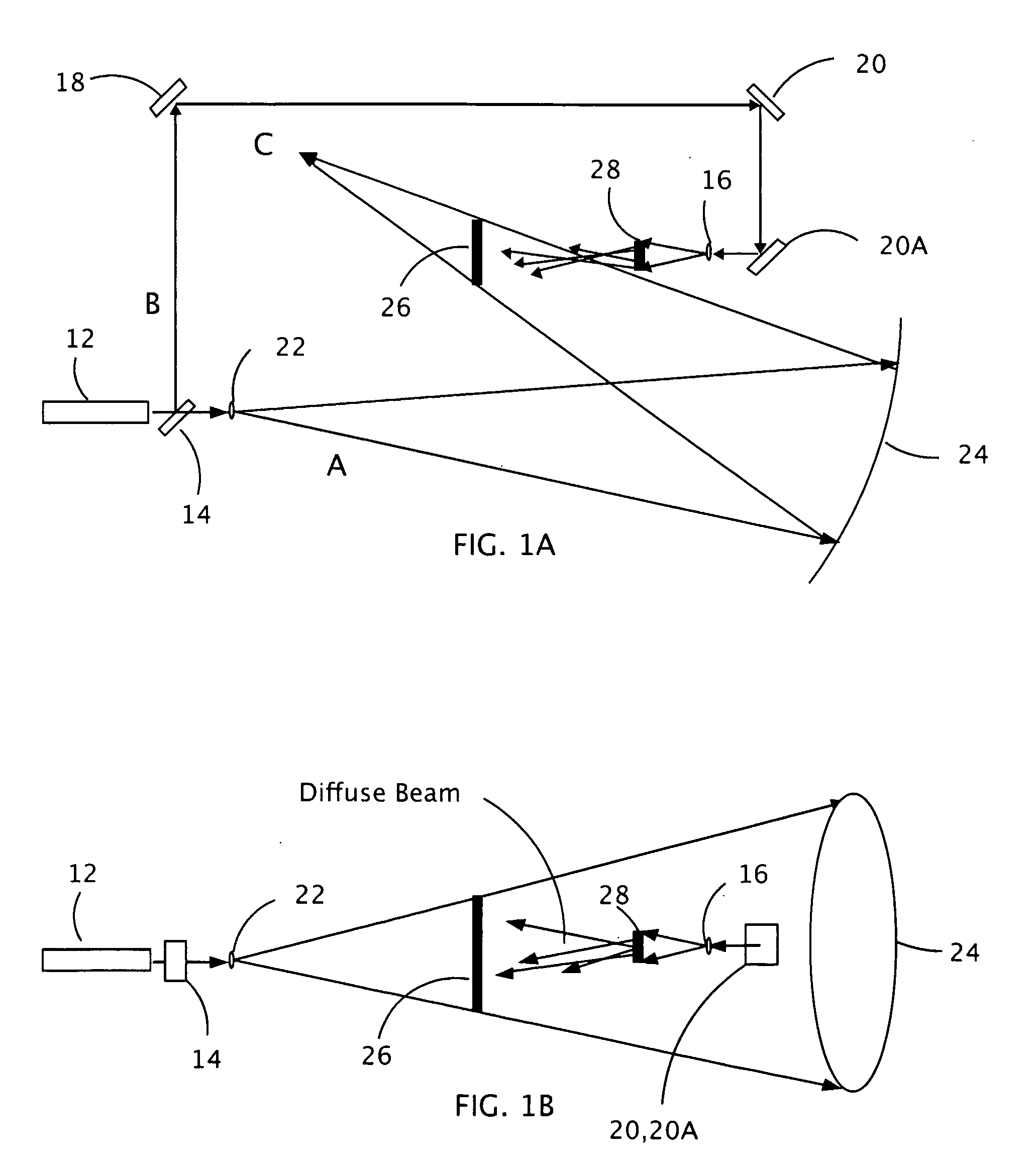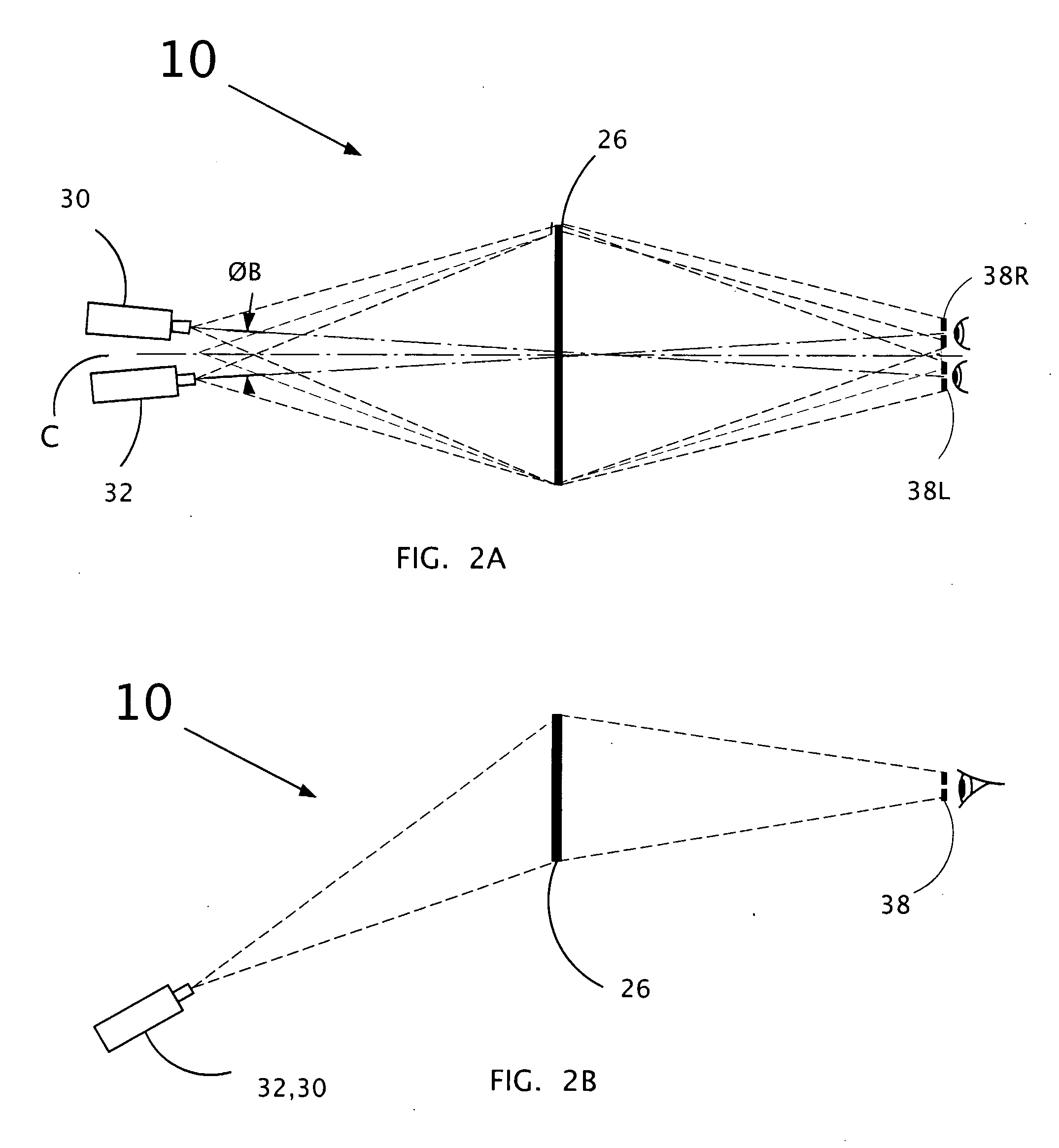Auto-stereoscopic diffraction optics imaging system providing multiple viewing pupil pairs
- Summary
- Abstract
- Description
- Claims
- Application Information
AI Technical Summary
Benefits of technology
Problems solved by technology
Method used
Image
Examples
Embodiment Construction
[0024]Embodiments of the presently disclosed imaging system will be described below with reference to the accompanying drawing figures wherein like reference numerals identify similar or identical elements. In the following description, well-known functions or constructions are not described in detail to avoid obscuring the disclosure in unnecessary detail.
[0025]This disclosure describes an autostereoscopic imaging system 10 for showing a three dimensional image. One embodiment makes use of multiple transmission holographic images of separate diffusers which are combined to form a diffraction optics imaging system. FIGS. 1A and 1B show top and side views, respectively, of an optical setup for recording one diffuser 28 into a holographic recording plate 26 that may be processed, as necessary or appropriate, to form a diffraction optical element 26 (see FIG. 2A). As shown in FIG. 1A, the beam from laser 12 is split by beam splitter 14 with one of the resulting beams (B) directed by mi...
PUM
 Login to View More
Login to View More Abstract
Description
Claims
Application Information
 Login to View More
Login to View More - R&D
- Intellectual Property
- Life Sciences
- Materials
- Tech Scout
- Unparalleled Data Quality
- Higher Quality Content
- 60% Fewer Hallucinations
Browse by: Latest US Patents, China's latest patents, Technical Efficacy Thesaurus, Application Domain, Technology Topic, Popular Technical Reports.
© 2025 PatSnap. All rights reserved.Legal|Privacy policy|Modern Slavery Act Transparency Statement|Sitemap|About US| Contact US: help@patsnap.com



